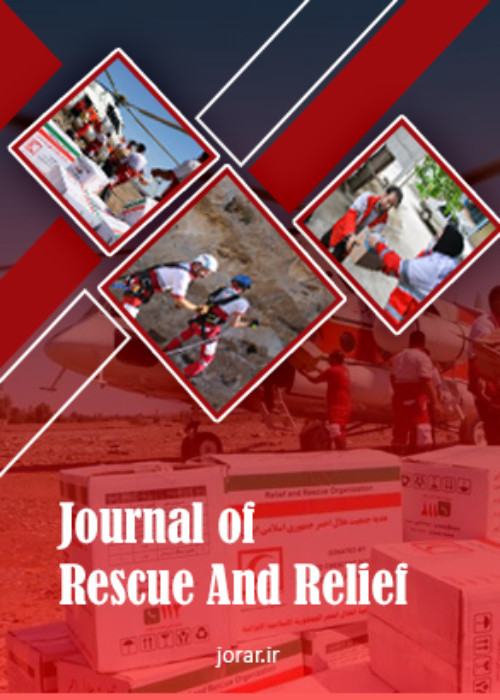The study of fire risk assessment models in buildings
Author(s):
Abstract:
Background
Fire is one of the important issues that influence on all three categories of safety, health and environment. The use of appropriate methods of fire risk assessment by identifying risks and applying appropriate technical and management measures to control or minimize the probability of disasters and mitigation can reduce significantly the damages caused by fire. Therefore, the main objectives of this research are review and compare the fire risk assessment models to determine using terms of models. Methods
In order to achieve the main objective, initially existing fire risk assessment models were reviewed. Then by using descriptive-analytical method, the fire risk assessment models and their application were discussed. These models are described in this research such as CESARE-Risk model in Australia, FIRECAM and FIERA System in Canada, CRISP model in the UK and QRA that has been developed at Lund University in Sweden. Findings
According to this study, in models based on cost-risk assessment methods such as CESARE-Risk, FIRECAM, and FIERA, certain conservative assumptions and approximations have been made due to the complexity and the lack of sufficient understanding of fire phenomena and human behavior. As a result, these models should not be used for absolute assessments for fire risks and losses while they are considered to be reliable for comparative assessments and selection of a costeffective fire safety system. However, the CRISP model scope has been limited to two story residential occupancies, and has been used to evaluate such tradeoffs as fire detection installation versus the need for additional passive fire protection, and caution has been urged relative to the model’s use in more complex buildings. Finally, there are some a number of challenges and limitations to using of LUND QRA method including difficulties in developing appropriate analytical expressions and uncertainty factors. Conclusion
In this research, fire risk assessment models are studied. On this basis, the models developed for specific occupancies are only applicable to those buildings and cannot be easily extended to other ones. This is mainly due to the implicit assumptions and simplifications by computer. Another important issue related to the acceptance of the fire risk assessment methods for fire safety. Some of the reasons included such as lack of full credit and lack of knowledge and technology for education in these models for designers and code officials as well as the lack of proper validation of the models.Keywords:
Language:
Persian
Published:
Scientific Journal of Rescue Relief, Volume:5 Issue: 4, 2014
Page:
80
magiran.com/p1282375
دانلود و مطالعه متن این مقاله با یکی از روشهای زیر امکان پذیر است:
اشتراک شخصی
با عضویت و پرداخت آنلاین حق اشتراک یکساله به مبلغ 1,390,000ريال میتوانید 70 عنوان مطلب دانلود کنید!
اشتراک سازمانی
به کتابخانه دانشگاه یا محل کار خود پیشنهاد کنید تا اشتراک سازمانی این پایگاه را برای دسترسی نامحدود همه کاربران به متن مطالب تهیه نمایند!
توجه!
- حق عضویت دریافتی صرف حمایت از نشریات عضو و نگهداری، تکمیل و توسعه مگیران میشود.
- پرداخت حق اشتراک و دانلود مقالات اجازه بازنشر آن در سایر رسانههای چاپی و دیجیتال را به کاربر نمیدهد.
In order to view content subscription is required
Personal subscription
Subscribe magiran.com for 70 € euros via PayPal and download 70 articles during a year.
Organization subscription
Please contact us to subscribe your university or library for unlimited access!


